Tag Archives: sleep
Things We Like: Sleeping In Total Darkness
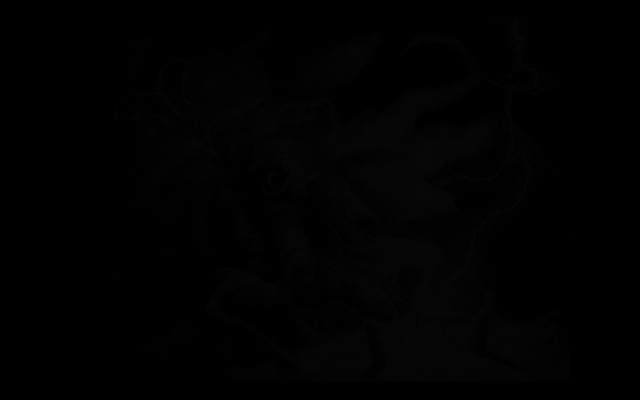
Post by Kyle St. Romain
In previous articles, we’ve discussed the three basic ingredients for a good night’s sleep: (1) a dark room; (2) a cold room; and (3) a luxurious bed. There are some other things you can do that will help you sleep more restfully, like: getting enough exercise, eating the right foods, and even wearing a pair of socks to bed, but a comfortable bed in a cold, dark room are the pillars of good sleep.
Unfortunately in today’s world, many people sleep in relatively light rooms. Some people even sleep with the television set on — something I do not understand. But even if you’re able to fall asleep in a lit room or actually prefer it, chances are you’re not getting the best night’s sleep you could. So today we’re going to discuss exactly why total darkness is a must-have for your mind and body to rest properly.
Darkness was probably something our ancestors took for granted (read: feared). With no electricity or artificial lights, early humans lived by the natural cycles of day and night — the key word being natural. With the advent of fire we started to become masters over our domain. Fast forward to present time and it’s all but impossible to find total darkness outside unless you’re camping somewhere remote. This is especially true for those of us who live in urban environments where almost every street is laden with artificial lights — lights that are considerably brighter than what we would otherwise be exposed to at night (the moon and stars).
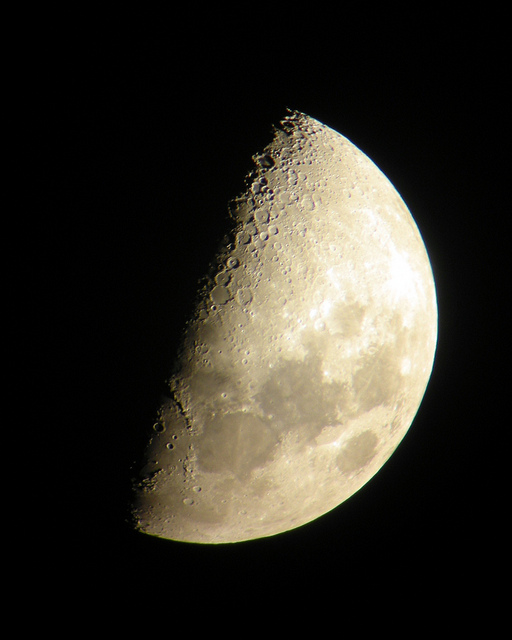
In darkness, our brains are wired to produce melatonin, a hormone that helps lower blood pressure, glucose, and body temperature. The production of melatonin is one of the most important physiological responses that helps us sleep better. When melatonin production is suppressed, we start to go into sleep debt, which can cause fat gain, insulin resistance, and inflammation.
When we are exposed to light before going to sleep, however dim, our bodies’ natural rhythm gets thrown out of whack. Making matters worse is that many light bulbs, computer screens, and smartphones emit blue light, one of the most stimulating colors of light. Exposure to blue light from a computer screen is why it’s harder to fall asleep quickly after responding to those late night emails.
If you’re struggling with overexposure before bed, here are some helpful tips for eliminating light before sleep:
- Blackout curtains are an easy way to keep unwanted light from coming through your windows.
- Get rid of electronics in the bedroom. All those little power indicators can create quite a bit of light in an otherwise dark room. Clock radios, televisions, computer screens, and other gadgets are common sources of light in the bedroom. Even if these devices are not emitting light, their electrical currents can still disrupt your sleep pattern, so get them out of the bedroom.
- Color shift your computer screen. Working late is a fact of life for many of us, but if you have to be on the computer after sundown, you should at least try to minimize the damage. Having used the program f.lux for a number of years, it now hurts my eyes to look at a “regular” screen at night. This is something I cannot recommend enough.
So next time you’re having trouble going to sleep, think about how much light you were exposed to right before bed. You may find that a little less light is just what your body needs to get out of sleep debt.
Things We Like: Sleeping Positions For Better Health
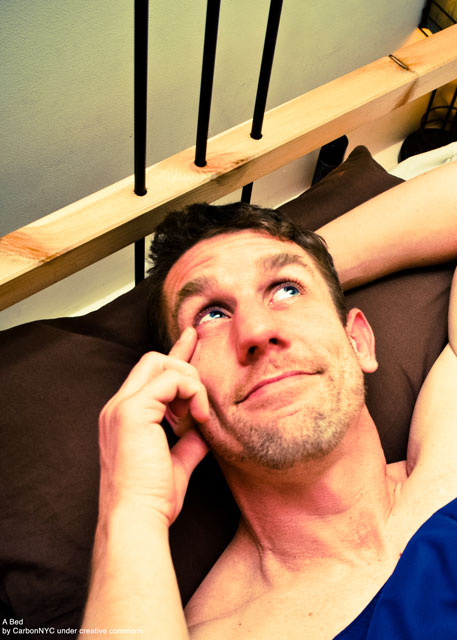
Post by Kyle St. Romain.
We all know that it’s important to get a good night’s sleep, and we’ve posted dozens of articles here on the Charles P Rogers blog to help you do just that. Today, we’re going to discuss another important element of a good night’s sleep: the position you sleep in. Keep reading below to learn more about how the most common sleep positions affect your health (and what they say about your personality).
The “soldier”: Flat on your back with your arms at your sides.
Widely considered the best sleeping position, lying on your back with your arms at your sides promotes a healthy spine and neck. However, people who sleep on their backs tend to snore more than others. Solider sleepers are usually more reserved, quiet, and have higher standards for themselves and others.
The “log”: On your side with both arms down.
The log is generally considered a good sleeping position; however, it can cause some neck pain as your shoulders put your head at an angle down towards the pillow. Loggers and are usually thought of as being easy going and sociable.
The “starfish”: Flat on your back, with your arms overhead.
Similar to the log position, starfish sleepers lie flat on their backs. Instead of leaving their arms at their side, however, starfish sleepers put them above their head — either on top of or underneath the pillow. While this position also promotes good spine alignment, some people may experience shoulder/neck pain over time due to the extra pressure put on the shoulders. Starfish sleepers tend to make good friends, and are good listeners.
The “freefall”: On your stomach, face down.
Sleeping on your stomach is said to help with digestion; however, it restricts breathing. After all, it’s pretty hard to breath through a pillow. As such, many people who sleep on their stomachs tend to tilt their head to one side or another which can put a lot of strain on your neck and back. This strain also causes many freefallers to experience restlessness, as they constantly adjust throughout the night in search of comfort. Freefall sleepers are typically brash and outgoing, but do not take criticism well.
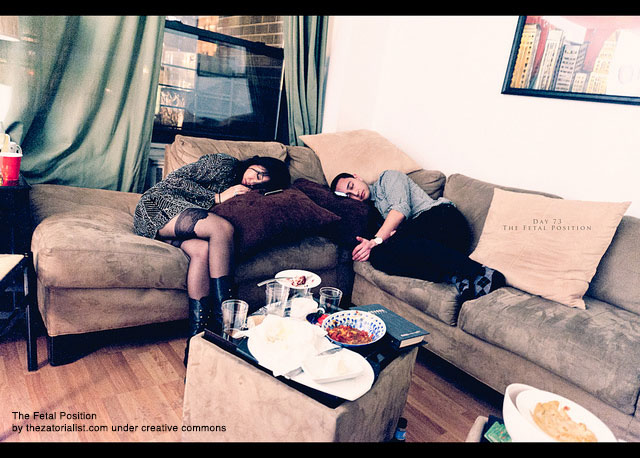
The “fetal position”: Curled up in a ball on your side.
The fetal position is the de facto for comfort, and is by far the most popular position people sleep in. After all, it is the position we were first created in. If you’re having trouble with snoring or are pregnant, the fetal position may provide you with temporary relief. While the fetal position may seem like the most comfortable way to sleep, it can wreak havoc on your neck and back, and also restricts deep breathing. People who sleep in the fetal position are said to be tough on the outside and soft on the inside.
The “yearner”: On your side with both arms out.
Similar to the log, the yearner position is another popular sleep position. The yearner differs from the log in arm placement: they are stretched out in front, rather than being kept at your side. Yearners tend to be stubborn yet open-minded.
So if you’re looking for a better night sleep, you may want to try changing your sleep position. A new sleep position can not only help you sleep better, but can also help you stop snoring (which means your spouse will sleep better) or even get rid of that lingering pain in your neck.
Things We Like: Getting Primed For A Better Night’s Sleep
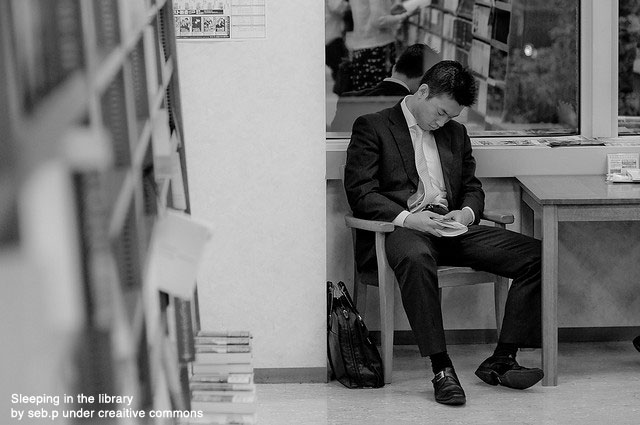
Post by Kyle St. Romain.
Following this month’s theme of sleep studies, I have another bit of research that may help you sleep better. In a study titled, the effect of subliminal priming on sleep duration, which can be found online here, the authors found that subliminal exposure to certain words before going to sleep can improve the quality and duration of our sleep. The Boston Globe goes so far as to call it “subliminal Ambien.” To better understand how this works, we first need to understand a concept in psychology known as “priming.”
A simply way to describe priming is “that for a period of time after a word or other perceptual object is presented, less neural activity is required to process that same word of object.” In other words, repeated exposure to certain words or phrases makes it easier for your brain to associate them with a specific memory. As it relates to this study, priming your brain with sleepy word with the objective of getting to sleep faster is known as “goal-priming.” Okay, so how does it work? And more importantly, how can I prime myself to get to sleep faster?
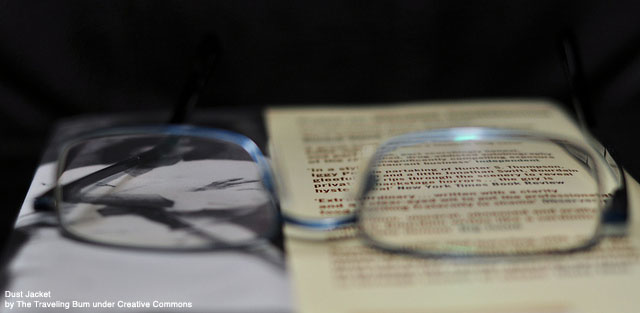
The author of this study has stated that this type of “goal-priming” can be achieved by placing sticky notes or index cards with slumber-centric words like “calm,” “rest,” and “drift away” throughout your bedroom. So much so that the participants who were exposed to these sleepy words slept 47 percent longer and had lower heart rates than those who were exposed to “neutral” words. The study also found that the effects of subliminal priming are greater among participants who had trouble sleeping, suggesting that exposure to these subconscious cues may be a cost-effective treatment to help people with sleep problems. This may also help explain why bedtime stories are so effective for getting your kids to go to sleep.
However, this sort of goal-priming for better sleep is somewhat controversial, as other studies have been unable to replicate the results. Does it work, or not? We’ll let you be the judge. For me, it’s worth a try.
Things We Like: Spring Cleaning For Your Brain While You Sleep

Post by Kyle St. Romain.
Last week we discussed how sleeping on a problem can boost your creative problem solving abilities — specifically, rapid eye movement (REM) sleep. While I was researching that article, I came across another interesting study that I want to share with you.
The study up for discussion today is titled, Sleep Drives Metabolite Clearance from the Adult Brain. In a nutshell, the study found that your body rids the brain of toxic metabolic waste while you sleep. Yes, your brain needs to be cleaned with some regularity — like every day.

When we sleep, the brain cells shrink to facilitate the circulation of a special type of brain fluid that actually washes away the gunk and grime that accumulates between brain cells throughout the day. When we don’t get enough sleep (read: the body doesn’t have a chance to clean the brain) brain function is impaired and neural pathways are destroyed. The process is likened to “a dishwasher…. pumping fluid into the brain and removing fluid from the brain in a very rapid pace” according to Dr. Maiken Nedergaard who coauthored the study.
In addition to the temporary cognitive impairment (the brain fog you experience after a restless night), a prolonged lack of sleep is also thought to be a contributing factor to a number of permanent neurodegenerative problems, including Alzheimer’s disease. In fact, the authors of the study speculate that we may even be able to control sleep in a way that helps prevent Alzheimer’s and other diseases associated with dementia. The varying rates that our brains accumulate waste may also be one of the reasons why some people need more sleep than others to feel rested. In other words, our bodies tells us when it’s time to take out the trash, and how long it’s going to need; a message that shouldn’t be ignored.
However, lack of sleep alone does not paint the entire picture. Another related study believes that some people may have a faulty glymphatic system (the brain’s equivalent of a lymphatic system). And if your body doesn’t have the proper facilities to remove waste from the brain, all the sleep in the world won’t help.
So, until these doctors and scientists figure out how to diagnose/treat a faulty glymph system, your best bet to maintaining a healthy brain is to be sure you’re getting enough sleep!
Things We Like: Creative Problem Solving While You Sleep
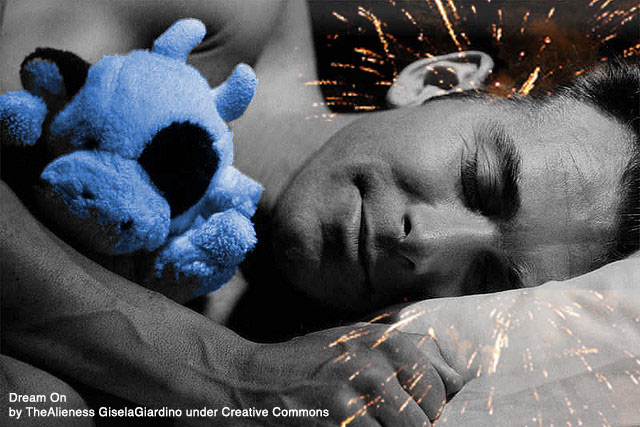
Post by Kyle St. Romain.
Have you ever been faced with a difficult decision and responded with, “Let me sleep on it”? While that response certainly a great way to delay an important decision, it also turns out that there is some science behind it too.
In a study conducted at the University of California, San Diego a few years back, researchers found that rapid eye movement (REM) sleep — the dream stage of sleep — helps foster the formation of associative networks in the brain more than any other wake or sleep state. According to the lead researcher, Dr. Mednick, “For creative problems that you’ve already been working on — the passage of time is enough to find solutions. However, for new problems, only REM sleep enhances creativity.” Note the difference between new and existing problems.
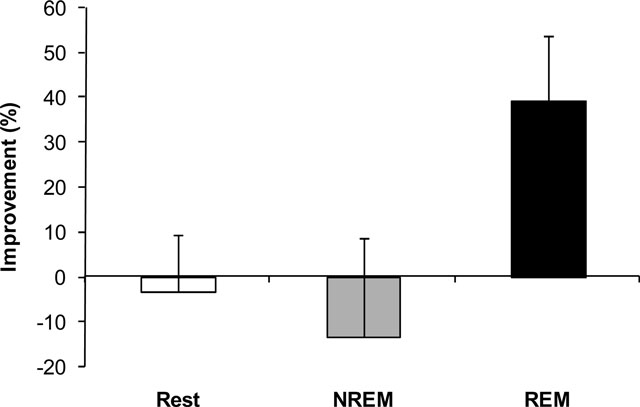
To put this into numbers, REM sleep was found to boost creative problem solving by almost 40 percent as compared to the participants who only had either quiet rest or non-REM sleep. This boost in creative problem solving is associated with the brain’s ability to create new nerve connections, uninterrupted by outside influences that we are subject to during non-REM sleep or while we’re awake. If you let it, your brain will wire itself to solve problems for you — the human equivalent of autopilot.
You can read the full text of the study here.
In past articles I’ve introduced you to the idea of taking an afternoon siesta, or power nap, to boost performance and energy levels throughout the day. However, the study cited above is the first to look specifically at how the stages of sleep impact your performance. While resting can boost your energy levels, you really need to hit a deep sleep to gain the most benefit. On average, it takes about 90 minutes after falling asleep to hit the REM stage (stage 5). Plan accordingly.
So next time you have a difficult and new decision to make or problem to solve, try sleeping on it. You may be surprised with what you come up with in the morning.

